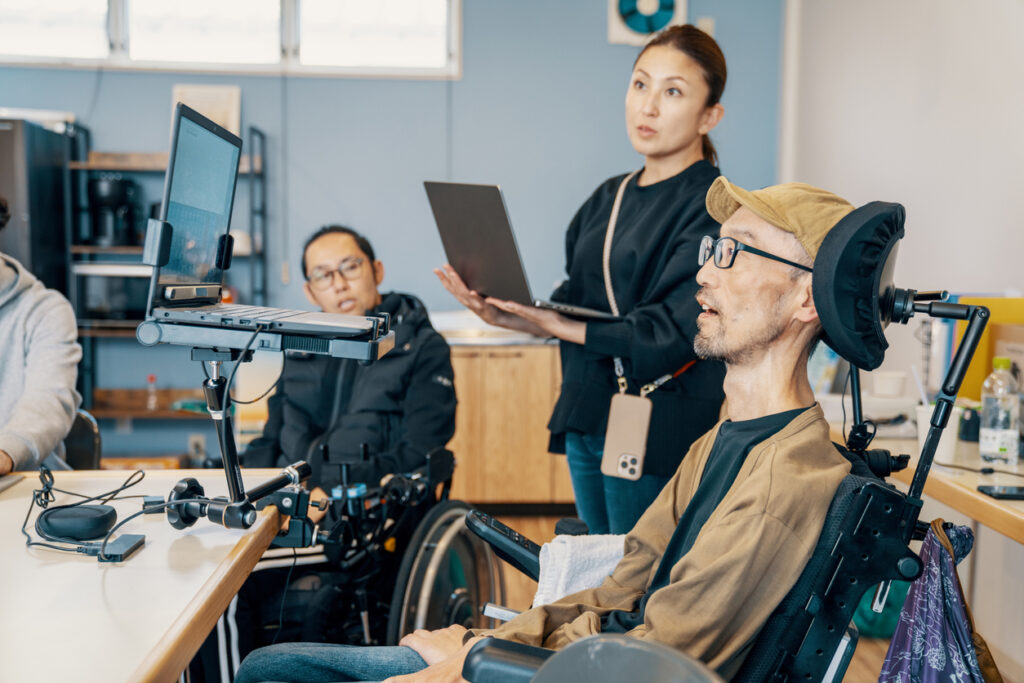Workplace e-learning now serves more people in more ways than ever before. With the global e-learning market projected to exceed $490 billion by 2028, companies face growing pressure to deliver accessible training across regions, generations, and learning needs.
New laws are also redefining what accessibility means for a global workforce. The EU Accessibility Act (EAA) (June 2025) and the Web Content Accessibility Guidelines (WCAG 2.2) set clear requirements for how digital content must support users with disabilities. In the U.S, The Americans with Disabilities Act (ADA) defines accessibility standards for digital content, especially in public and private-sector training programs.
Companies delivering training across languages face critical questions: Which e-learning accessibility features are effective when translated? How do you maintain usability across different scripts, reading patterns, and cultural expectations? These are localization challenges as much as technical ones.
New Requirements, Rising Standards
The ADA, EAA, and WCAG 2.2 set common benchmarks for accessible digital content, but applying these regulations can be complex. Organizations need a practical understanding of them to ensure compliance and deliver inclusive learning effectively.
The EAA establishes unified accessibility requirements across the EU, explicitly covering digital training materials and e-learning platforms. This provides much-needed clarity for organizations offering digital services in Europe.

WCAG 2.2 introduces several updates that impact digital learning, such as:
- Clear focus indicators (2.4.11) for keyboard navigation, improving usability for those using assistive technologies or keyboard-only input.
- Alternatives to dragging movements (2.5.7) for users with limited mobility.
- Consistent access to help (3.2.6) for people with cognitive disabilities.
While the ADA doesn’t set specific standards for digital content accessibility, the WCAG is referenced in legal guidance and enforcement, making it a common reference point for compliance.
Achieving ADA, EEA, and WCAG 2.2 compliance requires a substantial shift in how digital training is developed, beginning with close coordination between e-learning and localization teams.
Designing for Inclusion: Essential Features for Accessible E-Learning
Accessible e-learning depends on how information is structured, not just how it’s labeled. Thoughtful design can reduce friction or introduce unintended barriers that are rooted in ableist assumptions about how people interact with content.
Deaf and hard-of-hearing learners need more than automated captions, especially for fast-paced dialogue, unfamiliar terminology, or regional accents. Transcripts should reflect spoken information, including speaker IDs and sound cues. For some, sign language interpretation may be necessary, especially when training includes live sessions or video introductions.
Blind and low-vision learners often rely on screen readers and assistive technologies, but these tools only work when learning elements are structured correctly. Headings need to follow a clear hierarchy, interactive elements have to be labeled, and alt text should convey what an image shows and why it matters.
Neurodivergent learners, including those with ADHD, dyslexia, or autism, benefit from simplified navigation, consistent layouts, and reduced cognitive load. Instructions should be direct and jargon-free. Audio and visual elements, like a color-friendly UI, should support the material because overdesigned courses can create confusion or distraction, particularly for those who prefer clarity.
Learners with physical disabilities may use keyboards, speech-to-text tools, or assistive switches. Every task, whether completing a quiz, clicking through a slideshow, or submitting a form, must be doable without a mouse or precise gestures. Time-limited interactions and drag-and-drop activities can cause problems when accessibility isn’t considered during the design process.
These examples reflect today’s global workforce and help define what effective digital learning should look like. When e-learning accessibility is considered during design, the result is more usable and consistent content.
Accessible by Age: Adapting E-Learning for Generational Diversity
Accessible e-learning depends not only on physical or cognitive design but also on how learning preferences shift with age. Someone in their twenties may engage with digital resources differently than someone who entered the workforce before online training became common.
In many organizations, e-learning must serve four generations at once: Baby Boomers, Gen X, Millennials, and Gen Z. Their goals may be similar, but their delivery preferences vary. Gen Z tends to favor mobile-first formats and self-guided exploration. Older learners may prefer structured modules and text-based materials.
This generational diversity can affect how accessible and effective a course is. A program that relies on video with no transcript or assumes comfort with mobile gestures could leave some users behind. Dense materials or a lack of visual support may frustrate those accustomed to more interactive experiences.

Multimodal design, which presents key information through text, visuals, and audio, helps meet these varied needs. So does giving users control, such as the ability to adjust font size or playback speed. Accessible design accounts for these differences and builds in flexibility for user preferences.
Some companies strengthen learning across generations with mentorship or inter-generational training programs. These approaches help support knowledge sharing and an inclusive workplace culture. Organizations that invest in these strategies often see stronger engagement and long-term workforce retention.
Why Inclusive Corporate Training Needs Localization
Accessibility doesn’t stop at language. For digital learning to work across regions, it needs to be both localized and accessible from the start. These goals are often handled by different teams, but they work best when planned together.
The way people learn is shaped by more than text. Cultural norms, interface expectations, and local regulations all influence how training is received and understood. Navigation that feels intuitive in one region might confuse learners elsewhere. A color that signals success in one country might suggest a warning in another.
The same goes for accessibility features. Subtitles, alt text, and transcripts need to be accurate, but accuracy alone isn’t enough. Captions may need to be paced differently for reading comfort, and plain language translation can make complex training easier to understand.
In some regions, accessibility includes local sign language, native screen readers, and region-specific accessibility laws. These details are easy to miss unless localization for accessibility is part of the process.
Include Accessibility from the Start
When accessibility is addressed too late, it often creates more challenges than it solves. Retrofits take time, and learners may disengage when their experiences are inconsistent.
By contrast, successful organizations align cross-functional teams and integrate accessibility into design and localization workflows early. For example, a global cybersecurity company partnered with Vistatec to adapt employee training for international markets. By introducing accessibility early, the company avoided costly rework, reduced production time, and delivered a clearer, more consistent learning experience across regions.
Accessibility for Every Learner Everywhere
The most effective e-learning programs go beyond compliance to support equal learning opportunities for everyone. They build inclusive training that’s scalable, sustainable, and aligned across design, localization, and accessibility from the start.
For global organizations, accessibility is a strategic investment. It reduces legal and compliance risks, saves time, and helps companies reach wider audiences. Inclusive training leads to better engagement, stronger retention, and a workplace culture that values every learner.
Leading companies don’t rely on retrofits. They build systems that support learners across languages, cultures, and ability levels, delivering better results for both learners and the business.
Vistatec helps global organizations build in e-learning accessibility from the start. If you’re creating accessible learning across regions, contact us to see how we can help you deliver training that works for everyone.

